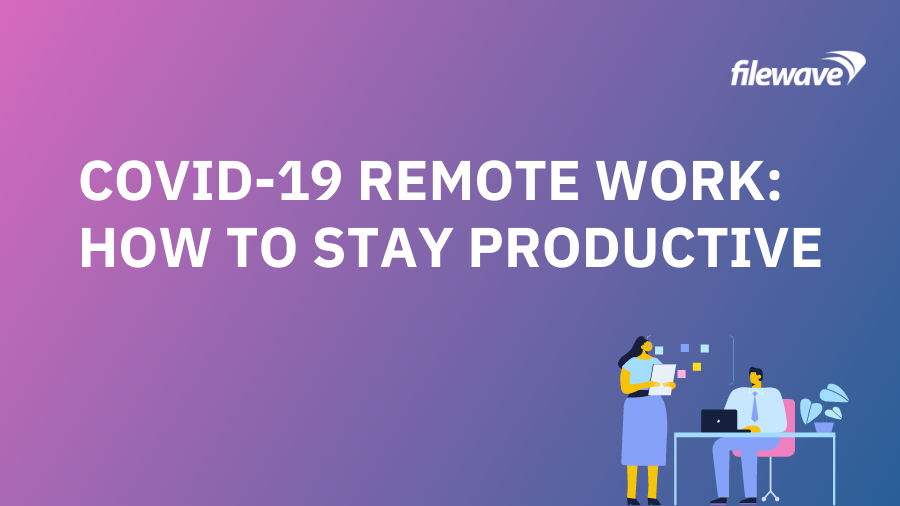Remote work under COVID-19 is about more than just productivity: it requires balance, flexibility, and communication.
As we enter another month under enforced quarantine and self-isolation, we settle into a new reality of remote work. While there is much we can do from an IT perspective to support remote workers, the truth is that COVID-19 requires a new way of working. Here are key tips to help you optimize your workspace, support your productivity, and fill some of the gaps in your social well-being.
Create a Dedicated Office Space
While we may laugh at the desk created from a stack of toilet paper, that desk is probably feeling pretty frustrating by week 3. Whether it’s carving out a corner of the dining table, leveraging a side table, or another creative hack, claim a space as “office.” If you prefer a standing desk, try a dresser or ironing board to elevate your work space.
Next up, fix how you’re working. Laptops are great for portability, but as a device for prolonged use, you have a recipe for neck pain. If you can, elevate your screen with books or boxes and leverage external peripherals to improve your ergonomic set-up.
Beyond your physical office space, make sure you have access to:
- Support for your personal device, which should be logged into your organization’s MDM platform to be sure you have the apps you need and that your device is compliant with corporate security standards
- A VPN + key to access the corporate network
- Webcam, headset, external keyboard & mouse / trackpad
- Collaboration tools (chat, video, email)
- Any productivity and business applications you may need (ideally with corporate, not personal licenses)
Maintain a Routine While working From Home
People who work from home regularly often share that having a routine is key to being productive at home. However, many people are now working from home against their preference, while also juggling children, spouses, and complex realities of social isolation, restricted shopping, and limited fitness and outdoor time.
While it may seem silly, try to mimic your ‘regular’ routine as much as possible. Getting ready for work, exercising on particular days, going for a morning walk rather than a commute – all of these tips can help you mimic your regular ‘work day’ – even as you juggle new hours and responsibilities under COVID-19.
If you are working at home with other family members or children, a clear routine can go a long way to helping everyone feel more centered (and keep them busy!).
Communication is Key
Many organizational cultures are built around a strong social culture. Indeed, in the absence of socialization outside of work, the ability to connect within the workplace has become a high priority. If it’s not already happening, you need to take steps to increase your availability for communication online. As an employee, this can look like:
- Ensure you are marked as ‘online’ when you are working on any corporate chat platforms you use (such as Slack or Skype)
- Take advantage of video, even if it’s awkward, for team meetings. See ‘routine’ above and do get dressed for work!
- Go out of your way to choose video conferencing over chat or email when communicating with coworkers. Email is often the worst choice for collaboration!
- When in doubt, ask for a cheat sheet for collaboration, outlining which tool you should use for various tasks, helping everyone collaborate effectively.
- Include fun social channels (chat rooms) or social events (video) that allow you to connect outside of ‘work’
With fully remote teams, it’s best to follow up voice or video meetings with written summaries in order to be sure everyone is on the same page. Also be sure to check with your IT team to be sure you’re using approved video chat software, to remain compliant with company standards. If you aren’t sure, advocate for a self-serve software kiosk so you always know where to get approved content!
Just as importantly, be sure to ask for help when you need it. Openly communicate about what’s working for you and what’s not. Address challenges with your workspace with your IT team early, before you get frustrated. Ask for time or flexibility to support your mental health.
Under COVID-19, the work day just simply does not look the same as it would under normal operating circumstances. If this is your first time with remote work, we hope you’re excited by the prospect of working in new and innovative ways and that you’re taking the time to care for yourself.


